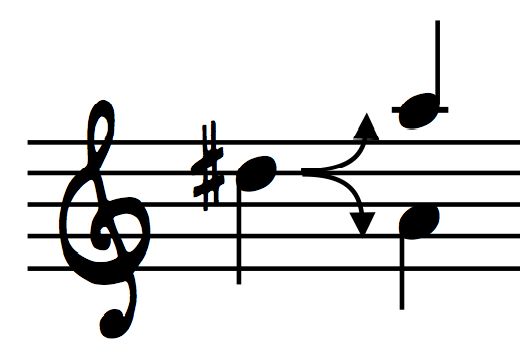
Does where you grew up have an impact on how you hear music? It appears so, according to experiments by Dr. Diana Deutsch on how people hear her Tritone Paradox.
This auditory illusion is a progression of one tone to another tone a tritone away. Take a listen for yourself to this D# to A tritone and see what you hear.
[audio:https://charliemccarron.com/mediaftp/tritone.mp3]Do you hear this pattern go up or down in pitch? Actually, it’s engineered so the second note contains both a higher and lower frequency, so there’s no right or wrong answer. But people often clearly perceive it as going down or up, and they may disagree completely with those around them.
 Diana Deutsch, who’s from the south of England, noticed that many of the native Californians around her disagreed with her on their perceptions of these tritone patterns. When she presented this illusion to fellow Europeans, most of them agreed with her. So she decided to test her theory, and found some significant differences in how native Californians and English perceive this tritone illusion. She’s done further studies that show mothers and their children perceiving the illusion similarly. These studies have led Diana to conjecture that the dialect and language you hear in infancy plays a role in how you perceive the tritone paradox.
Diana Deutsch, who’s from the south of England, noticed that many of the native Californians around her disagreed with her on their perceptions of these tritone patterns. When she presented this illusion to fellow Europeans, most of them agreed with her. So she decided to test her theory, and found some significant differences in how native Californians and English perceive this tritone illusion. She’s done further studies that show mothers and their children perceiving the illusion similarly. These studies have led Diana to conjecture that the dialect and language you hear in infancy plays a role in how you perceive the tritone paradox.
Of course, this tritone illusion happens because the tones are specially engineered. But in my talk with Diana, she brought up the fact that we probably also perceive real music differently, based on our native dialect.
When I presented about Diana Deutsch’s musical illusions last week at the Science Museum of Minnesota, I did an informal survey of listeners. I played them the D# to A tritone you heard above, and asked them what they heard. If they heard the pattern as going up in pitch, they placed a blue pin where they grew up. If they heard the pattern going down, they used a red pin. A yellow pin meant they weren’t sure what they heard.
The results seem a little more random than I was expecting, but it was still an interesting experiment. Next time, I think I would play the audio track before fully explaining the illusion, to avoid tainting people’s expectations. Also, I would only play the audio track once, since people seemed to change their minds once they thought about it.
Want to try out this Tritone Paradox experiment? Listen to the following audio track on speakers or headphones with a flat frequency response (not too bassy, not to tinny). Take note of whether you hear each pitch pair as going up or down, and record your responses below.
[audio:https://charliemccarron.com/mediaftp/diana-deutsch-tritone-paradox.mp3]
To learn about other musical illusions, check out my Composer Quest podcast interview with Diana Deutsch.
A Response from Diana Deutsch
Dear Charlie,
I saw your web post with the results of your informal experiment on the tritone paradox – they are very interesting!
Here are some comments on the results, and you are welcome to post any or all of them.
The feature of the tritone paradox that’s easiest to demonstrate is that there are enormous individual differences in how this pattern is perceived. This is surprising, since one would expect people to agree about whether a succession of tones that are separated by a half octave ascends or descends in pitch. The responses to the pattern that you presented display well these individual differences in perception.
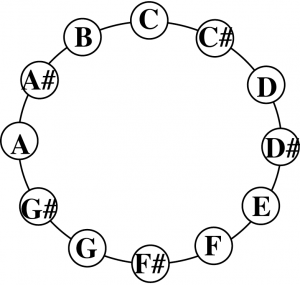
About the geographical differences, I should mention that my results reflect the relative frequencies with which listeners hear the pattern as ascending or descending, as a function of their position along the circle of note names (shown here) – even though the listeners are not naming the notes. So, for example, one person would always hear the pattern C-F# as descending, D-G# still as descending but not always, E-A# ambiguously (sometimes ascending and sometimes descending) , F#-C always as ascending, G#-D mostly ascending, and A#-E ambiguously. So based on this pattern of responses, we conclude that this person tends to hear notes around C as higher and notes around F# as lower. But another person could hear the tritone pairs in the opposite way, and yet another person could hear the pattern E-A# as always descending, F#-C mostly as descending, and so on around the circle of note names. But superimposed on this, some people tend to hear these patterns as ascending anyway, and others tend to hear them as descending anyway. So to obtain a clear picture, we need to give the listeners a number of tritone pairs, and look at the relative frequencies with which they hear the tritone pattern as ascending or descending as a function of the note names involved. (So, for example, one person may have a strong tendency to hear all these tritons as ascending, but still hear them as ascending more often in some region of the circle of note names than in a different region.) Presenting a larger number of examples should therefore produce a more orderly pattern than presenting only one example. (If you decide to try this test again, I’d recommend using the first six examples, in the first block, on my CD.)
Of course, in order to get a really good reading of how one person hears the tritone paradox, it is best to give them a very large number of examples, with inbuilt controls. I have such a set of examples on my CD ‘Musical illusions and paradoxes’ (this contains 16 x 12 tritone pairs) and this has been used very effectively by students who have carried out projects investigating perception of this pattern in particular regions of the U.S. Some high school students have carried out this experiment as science fair projects, and obtained excellent results, even winning prizes. (I remember one excellent project in Salt Lake City, Utah, where the results were very orderly indeed.) These studies were carried out together with a questionnaire concerning each subject’s linguistic background, and his or her parents’ linguistic backgrounds.
I also think that, if you decide to present this informal experiment with a single pair again, it would be better to chose a different tritone pair, since A and D# stand at the edges of the Californian pattern – – G-C# or G#-D should work better, I believe. Nevertheless, I note that on your map, people from California and other states in the southwest did produce the predicted results. In other informal studies I found that people from large East Coast cities produced much more variable data than did the Californians – probably because of the mix in the population within the cities, where accents – including pitch range – would vary considerably. The same may be true of Minneapolis, though I haven’t looked into this.
There’s also another factor at work – the way people hear the tritone paradox depends, not only on where they themselves grew up but also where their parents grew up. In one study, carried out with Frank Ragozzine, subjects in Youngstown, Ohio who all grew up in the area of Youngstown, were divided into two categories – those whose parents had also grown up in Youngstown and those whose parents had grown up elsewhere in the U.S. We found that there were clear differences between these two groups of subjects: those whose parents had grown up elsewhere in the U.S. produced a pattern that was similar to the ‘Californian pattern’, and that appears to be the most probable within the U.S. However, those whose parents had grown up in Youngstown instead produced a very mixed pattern. So since young children mostly hear their parents’ speech, it appears that the way we hear the tritone paradox depends strongly on the speech we heard in childhood.
Here are some references, in case people would like to pursue this further:
Deutsch, D. Paradoxes of musical pitch. Scientific American, 1992, 267, 88-95, [PDF Document]
Deutsch, D. The tritone paradox: An influence of language on music perception. Music Perception, 1991, 8, 335-347, [PDF Document]
Deutsch, D., Henthorn T. and Dolson, M. Speech patterns heard early in life influence later perception of the tritone paradox. Music Perception, 2004, 21, 357-372, [PDF Document]
Ragozzine, F. and Deutsch, D. A regional difference in perception of the tritone paradox within the United States. Music Perception, 1994, 12, 213-225, [PDF Document]
Deutsch, D., North, T. and Ray, L. The tritone paradox: Correlate with the listener’s vocal range for speech. Music Perception, 1990, 7, 371-384, [PDF Document]
Best wishes,
Diana
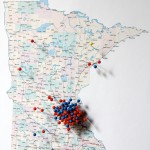










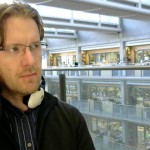

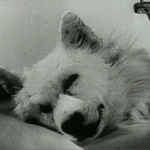
Hello Mr. McCarron,
I hope this email finds you well. My name is Donnie Harris and I am working in Madurai, India on a fellowship with the Oberlin Shansi Program. I was creating a logo for the recently reestablished Oberlin Shansi International Center, and I stumbled upon one of your images from your study titled, “The Tritone Paradox: How Your Hometown Affects Your Music Listening.”
I am emailing you because I wanted to know if you would be willing to give me consent to use one of your images from this study (the map of Tamil Nadu, India with a blue pin placed in Madurai). I know this is coming from left field, but this photo is exactly what I’ve been looking for.
*Please note that this image would striclty be for the purposes of having an office logo, and it is not intended to generate any form of profit, nor do I intend to take any credit for this photo.
Best,
Donnie A. Harris
—
Oberlin Shansi Fellow ’23-’25